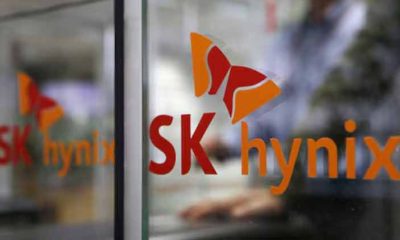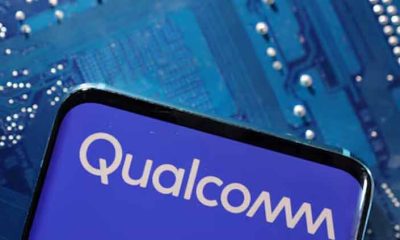Twitter’s attempt to implement a paid account verification service has attracted imposters spreading misinformation, which experts said could lead major brands to further pull back from the social media platform owned by billionaire Elon Musk.
On April 20, Twitter moved to boost profits by removing the once-coveted blue check marks from accounts and charging $8 a month to users who wish to buy a Twitter Blue subscription to retain their verified status.
Musk’s latest initiative was met with a wave of imposter accounts sharing harmful misinformation. Some organizations have already stopped using Twitter, including the New York City Metropolitan Transportation Authority (MTA) with 1.3 million followers. Both AT&T Inc and Volkswagen AG told Reuters they had paused Twitter ads and had not yet resumed as of April.
Twitter has been hit by a massive decline in advertising since the acquisition but Musk told the BBC last month most of the advertisers are returning to the platform.
Data from outside research firms and statements from several advertisers show Twitter’s ad business may not be bouncing back that quickly.
“Twitter Blue is a mess. This is more chaos and confusion for brands who were already wary of impersonation. They don’t want to remain on a platform where they feel vulnerable,” said Jasmine Enberg, principal analyst at Insider Intelligence.
Since Musk bought Twitter in October and began making rapid changes, brands have been debating whether they should keep advertising on the platform. Enberg said Twitter’s removal of legacy checkmarks could prompt some companies to stop tweeting and maintaining their profile.
“There’s little incentive for brands to keep an organic presence when they think their brand is at risk, and especially on a platform where it’s not going to drive any meaningful impact,” she said.
Rachel Moran-Prestridge, a postdoctoral scholar at the University of Washington’s Center for an Informed Public, said Twitter’s checkmarks for years gave users confidence an account was legitimate.
“Without this verification, users have to do much more heavy lifting to try to ascertain whether the account is who they say they are,” she told Reuters in an email.
In a move that furthered confusion, Twitter on April 22 appeared to give some high-profile users a verification mark.
Within the next 48 hours, all but 110 of the most-followed Twitter accounts suddenly had verification through Twitter Blue, indicating Twitter likely gifted the check marks, independent researcher Travis Brown told Reuters.
Neither Twitter nor Musk has commented on the return of the verification marks for a select few users.
An emailed request for comment to Twitter returned an automated reply with a poop emoji.
Reuters is a partner of Twitter’s Community Notes fact-checking project.
A fake account posing as Disney Junior UK, now a defunct TV channel, last week was issued a gold checkmark used for “verified organizations”. The Walt Disney Co (DIS.N) told Reuters it contacted Twitter and the account was suspended.
New York’s MTA said last Thursday it “does not pay tech platforms” and would stop tweeting service alerts and information.
“The reliability of (Twitter) can no longer be guaranteed,” the MTA said in a statement.
GRADUAL PULLBACK
Since the initial rollout of the Twitter Blue service in November, imposter tweets have spread harmful misinformation.
U.S. drugmaker Eli Lilly and Co (LLY.N) watched its stock tumble over 4% and was forced to apologize after a Twitter user impersonating its official account posted “insulin is free.”
Imposter Twitter accounts also tarnished the online reputations of Lockheed Martin Corp(LMT.N) and Nintendo Co Ltd(7974.T). Last month, Twitter told advertisers in an email that businesses spending less than $1,000 per month on Twitter ads must be subscribed to Twitter Blue or pay to be part of the verified organizations program to keep running ads on the platform, according to Matt Navarra, a social media consultant who has worked with Meta and Mozilla.
Eric Yaverbaum, CEO of the New York-based PR agency Ericho Communications, said more brands are likely to pull away if Twitter does not implement a stringent user verification model.
“Brands have already stopped ads on Twitter, many won’t come back, and I have a feeling more companies will put an end to advertising on the platform,” Yaverbaum said in an e-mail to Reuters.
Some brands have already taken countermeasures against online impersonation by retaining the services of brand reputation management companies.
Social Impostor CEO Kevin Long said a number of factors attract online impersonators to a celebrity or brand.
“Just because you had – or will have – a blue verification mark does not deter the imposters from creating accounts,” Long, whose company took down over 8,000 bogus accounts across major platforms, told Reuters in an email.
“The volume of imposter accounts seems to depend on several things — Is the client doing a high profile event that week? Is the client in the news for some reason – good or bad? My experience is this is across all social platforms.”
Post Views: 137


 Sports3 months ago
Sports3 months ago
 Fashion2 months ago
Fashion2 months ago
 Sports3 months ago
Sports3 months ago
 pakistan3 months ago
pakistan3 months ago
 pakistan3 months ago
pakistan3 months ago
 World2 months ago
World2 months ago
 World2 months ago
World2 months ago
 Sports2 months ago
Sports2 months ago






















